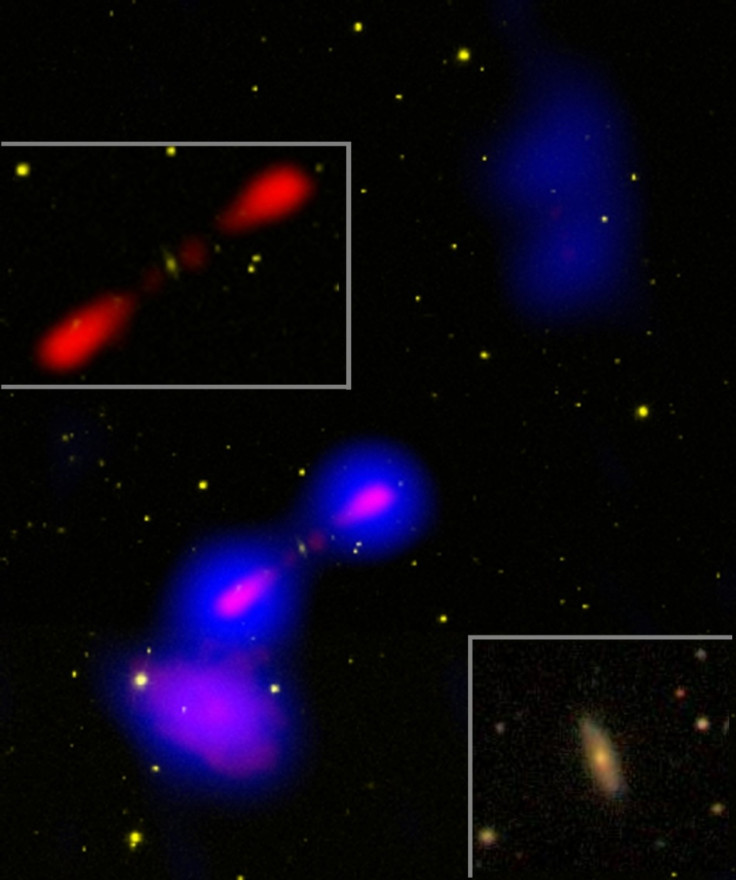Exotic Spiral Galaxy Producing Giant Jets of Superfast Particles Offers Glimpse of Younger Universe

A galaxy with a combination of unprecedented characteristics offers a fascinating window on the growth of galaxies early in the history of the universe, a group of scientists, who published their findings in the Monthly Notices of the Royal Astronomical Society, said in a statement.
The galaxy, dubbed Speca by the researchers, is only the second spiral galaxy known to produce large, powerful jets of subatomic particles moving at nearly the speed of light. It also is one of only two galaxies to exhibit such activity in three separate episodes.
Giant jets of superfast particles are powered by super massive black holes at the cores of galaxies. Both elliptical and spiral galaxies harbor such black holes, but only Speca and one other spiral galaxy have been seen to produce large jets. The jets pour outward from the poles of rapidly rotating disks of material orbiting the black hole. The on-and-off jet episodes have been seen in a dozen elliptical galaxies, but only one other spiral galaxy shows evidence, like Speca, for three such distinct episodes.
This is probably the most exotic galaxy with a black hole ever seen. It has the potential to teach us new lessons about how galaxies and clusters of galaxies formed and developed into what we see today, said Ananda Hota, of the Academia Sinica Institute of Astronomy and Astrophysics in Taiwan.
The scientists believe that Speca (an acronym for Spiral-host Episodic radio galaxy tracing Cluster Accretion), about 1.7 billion light-years from Earth, and the 60 or so other galaxies in a cluster with it are providing a look at what young galaxies and clusters may have been like when the universe was much younger. In the young universe, galaxies in such clusters would have been gathering additional material, colliding with each other, undergoing bursts of star formation, and interacting with primordial material falling into the cluster from outside.
Speca is showing evidence for many of these phenomena, Hota said. We hope to find many more galaxies like it with future observations, and to learn more about the processes and an environment that were much more common when the Universe was a fraction of its current age.
The radio images obtained by the researchers showed two pairs of radio-emitting lobes including the smaller pair close to the galaxy, presumably produced by the most-recently ejected jet particles.
The biggest surprise -- the low-frequency nature of the oldest, outermost lobes -- gave a valuable clue about the galaxy and the cluster's environment. The outermost radio-emitting lobes are old enough for their particles to have lost most of their energy and ceased to produce radio emission.
We think these old, relic lobes have been 're-lighted' by shock waves from rapidly moving material falling into the cluster of galaxies as the cluster continues to accrete matter, said Hota. All these phenomena combined in one galaxy make Speca and its neighbors a valuable laboratory for studying how galaxies and clusters evolved billions of years ago.
© Copyright IBTimes 2024. All rights reserved.












